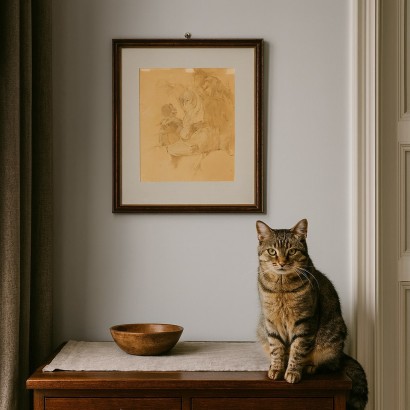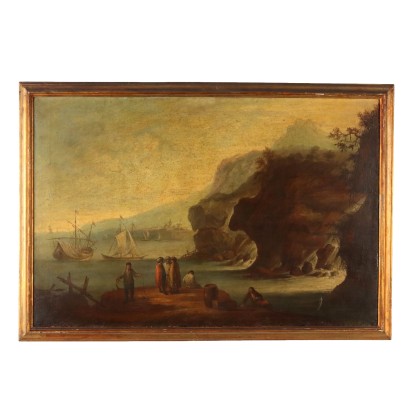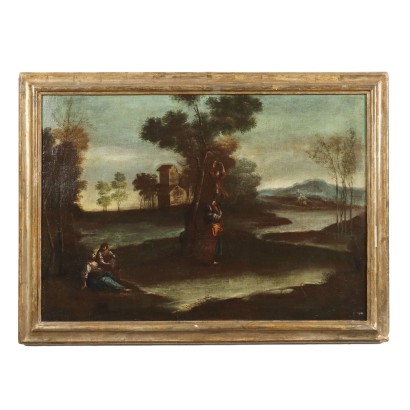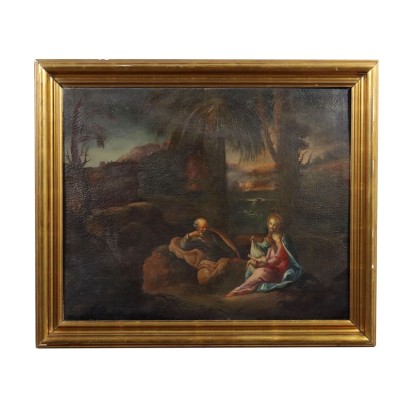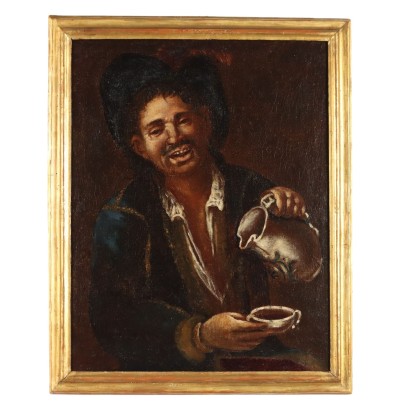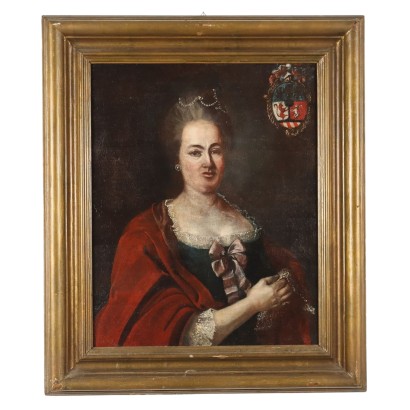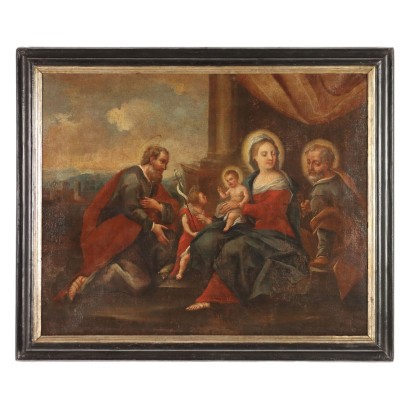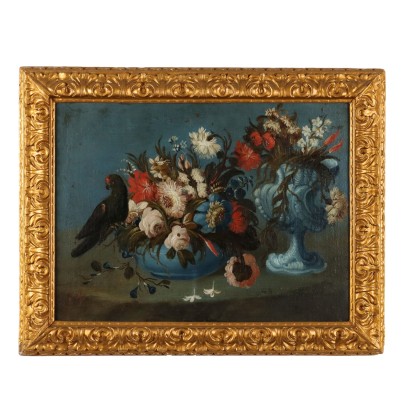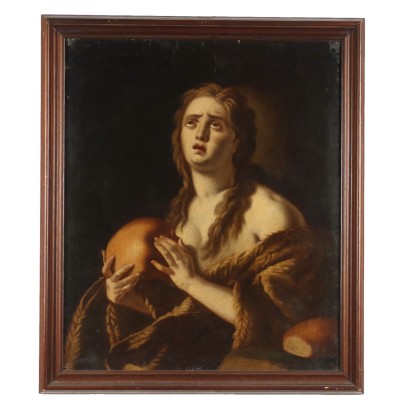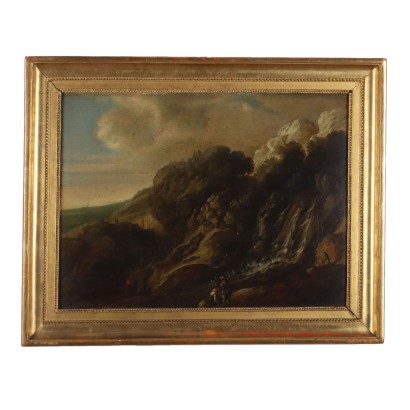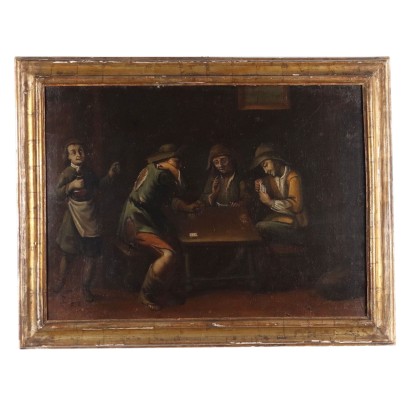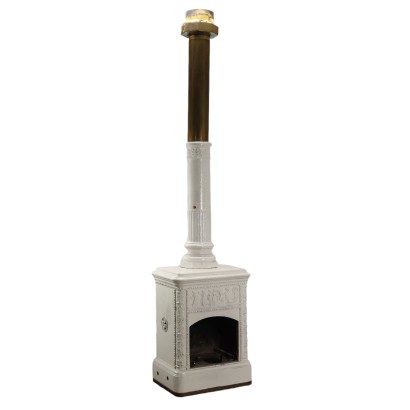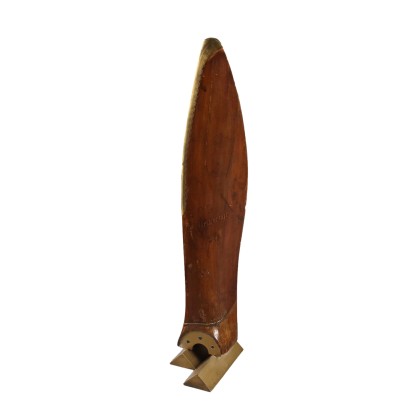Drawing by Giuseppe Bernardino Bison - Composition with Figures
Features
Composition with Figures
Artist: Giuseppe Bernardino Bison (1762-1844)
Artwork title: Composizione con figure
Age: 19th Century / 1801 - 1900 , 18th Century / 1701 - 1800
Subject: Allegorical/Mythological Subject
Artistic technique: Drawing
Technical specification: Mixed Technique
Description : Composizione con figure
Pen and ink wash on paper. Signed at the bottom. The composition, probably allegorical, features several female figures: one, seated in the center, holds a basket with birds, pigeons; behind her are two other women, one of whom holds a laurel wreath with her arm raised, while looking off into the distance. It could be a tribute to the conclusion of a war or battle, with the laurel wreath symbolizing victory and honor, and the pigeons symbolizing peace and hope. The Venetian artist Giuseppe Bernardino Bison, despite living in the midst of Neoclassicism and not alienating himself from the most up-to-date artistic movements, remained tied to the great Venetian tradition, which is evident both in his fresco production and in his intense easel work dedicated to genre scenes, views of Venice, and characteristic "capricious" landscapes often dominated by the ruins of classical architecture, traversed by wayfarers and populated by figures engaged in everyday activities in the presence of a nature captured at its most picturesque. His production also includes numerous allegorical drawings. The work is presented in a frame.
Product Condition:
The item is in good condition, with minor signs of wear. We try to present the item's actual condition as accurately as possible with the photos. If any details are unclear from the photos, the description will apply.
Frame Size (cm):
Height: 36
Width: 29
Depth: 1,5
Artwork dimensions (cm):
Height: 22
Width: 18
Additional Information
Artist: Giuseppe Bernardino Bison (1762-1844)
Born in Palmanova (Udine), Giuseppe Bernardino Bison when still a child moved to Brescia with his family and in this city, due to his lively disposition to art, he was initiated to pictorial studies by G. Romani and S. Gandini. The family subsequently settled in Venice, where Bison attended the Academy of Painting from 1779 to 1789, where, in those years, the subjects taught were nude drawing and perspective, subjects in which Bison earned several awards. In Venice he became a friend of the architect G. A. Selva, the author of the Fenice Theater, who got him some assignments in the first years of activity and gave him the opportunity to work as a set designer in Treviso, at the Fenice in Venice, at the Nuovo in Trieste. . The work took him to various Italian cities, also working a lot as a decorator, to finally land, in 1831 in Milan, over he remained until his death, participating for several years in the exhibitions of the Brera Academy.Age:
19th Century / 1801 - 1900
19th Century / 1801 - 190018th Century / 1701 - 1800
18th Century / 1701 - 1800Subject: Allegorical/Mythological Subject
Artistic technique: Drawing
Il disegno è il processo di tracciare segni su una superficie tramite l'applicazione di una pressione o il trascinamento di un apposito strumento sulla superficie. Gli strumenti sono: matite in grafite o colorate, penna, pennelli fini con inchiostro, pastelli a cera o carboncini; i supporti tradizionali più frequenti sono carta, cartoncino, tavola, muro, tela, rame, vetro.Technical specification: Mixed Technique
Other customers have searched:
Se sei un appassionato d'arte, non perderti i nostri approfondimenti sul Blog Arte Di Mano in Mano e su FineArt by Di Mano in Mano - Arte:
Leggi di più
Ecco alcuni tra i principali articoli:Vedute
Falsi nell'arte antica
Un messaggio di fiducia per ripartire
La potenza espressiva dell'arte figurativa etiope
Breve Storia del Collezionismo
Giorgio Upiglio, maestro dei libri d'artista
Matthias Withoos detto "Calzetta bianca"
San Rocco pensaci tu - Classic Monday
Dai un'occhiata alle nostre rubriche di divulgazione sull'arte:
Epoche
Lavorazioni e tecniche
Mostre ed Eventi
Protagonisti
Se sei appassionato di pittura antica, con tutta probabilità gusterai le schede di questi stupendi quadri:
"Dio parla a Noè dopo il diluvio", Jacopo da Ponte, detto il Bassano, seconda metà XVI secolo
Crocifissione, maestro della misericordia dell'accademia, terzo quarto del XIV secolo
Erminia incontra i pastori, Camillo Gavassetti, Seconda metà anni Venti del XVII Secolo
Eroine dell'antichità, Francesco Conti, XVIII secolo
Hieronymus III Francken, La Negazione di Pietro, XVII secolo
Jefte e la figlia, Girolamo Forabosco e aiuti, XVII secolo
L'Accademia di Platone, piccolo arazzo, fine XVII - inizio XVIII secolo
Maddalena e San Giovanni Battista
Natura Morta, Bartolomeo Arbotori, XVIII secolo
Sacra Famiglia con San Giovannino, Bartolomeo Ramenghi, scuola di, prima metà XVI secolo
Testa Femminile, Andrea del Sarto, ambito di, post 1522
Uva, fichi, melagrana e pesche su un capitello - Maximilian Pfeiler, primo quarto XVIII secolo
Sapevi che l'arte può essere anche un ottimo investimento (e non solo per grandi portafogli)?
L'Arte tra Collezionismo e Investimento
FineArt: Arte come investimento


